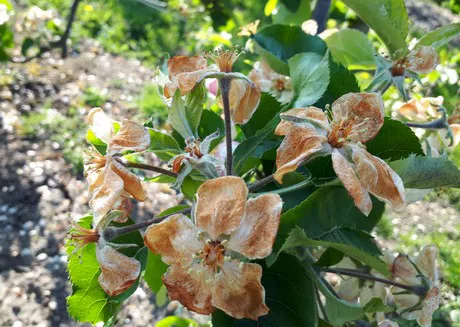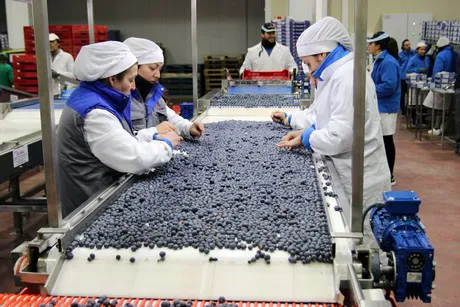The first thing that might come to mind when we look back on April 2017, especially for top fruit growers, is 'if we knew then what we know now'. Unfortunately, after what seemed like a promising start to the spring, growers across Europe were being threatened with
losses after snow, frost and cold temperatures hit towards the end of the month.
Bosnian orchards covered in snow in late April.
The news was better for apples coming out of the Southern Hemisphere, with worldwide demand for
Royal Gala's coming out of New Zealand and a new apple variety coming out of Australia called
Miapple, a block-red apple, suspected to be a cross between Royal Gala and Fuji.
Global trade of fruit and veg shows significant growth
The
export trade in fresh fruit and vegetables has developed more rapidly than the total global trade in goods in the past ten years. In the past year, the global fruit and vegetable export (including double counts of re-export) passed the limit of 100 billion dollar. That’s only a modest figure (0.7 per cent) in relation to the total export trade of goods in the world, which is 15 trillion (15,000 billion).
Blueberries, along with citrus, are undoubtedly part of this growth. April marked the start of the
Huelva's blueberry harvest, with a smooth transition from South American supplies to Spanish. However, there is some uncertainty in the sector about a possible oversupply of blueberries in the current and in future campaigns, after the acreage in Huelva has increased there were some doubts as to whether the market will be able to absorb such amounts.
As the
Chilean season came to an end, the Executive Director of the Chilean Blueberry Committee said that the end of the season had left a bitter taste, "The impact of the growing supply from other countries has been felt strongly this season, as revealed not only in the increase in the weekly supply and its impact on the commercial conditions, but also on the arrival condition of the domestic fruit in comparison with the foreign one."
The
Spanish Verna lemon season was getting ready to kick off, but there was concern about competition in the market after both Argentina and South Africa have also increased their lemon production in 2017.
In South Africa, there was concern that their lemons wouldn't be able to fetch the premium (prices) of previous years in the Middle East.












